One of my friends say that when a fly lands on your food, it poops on it. Is that always necessarily true?
Why Flies Rub Their Hands (and 10 Other Facts That Prove It’s Not Their Goal to Irritate Us)
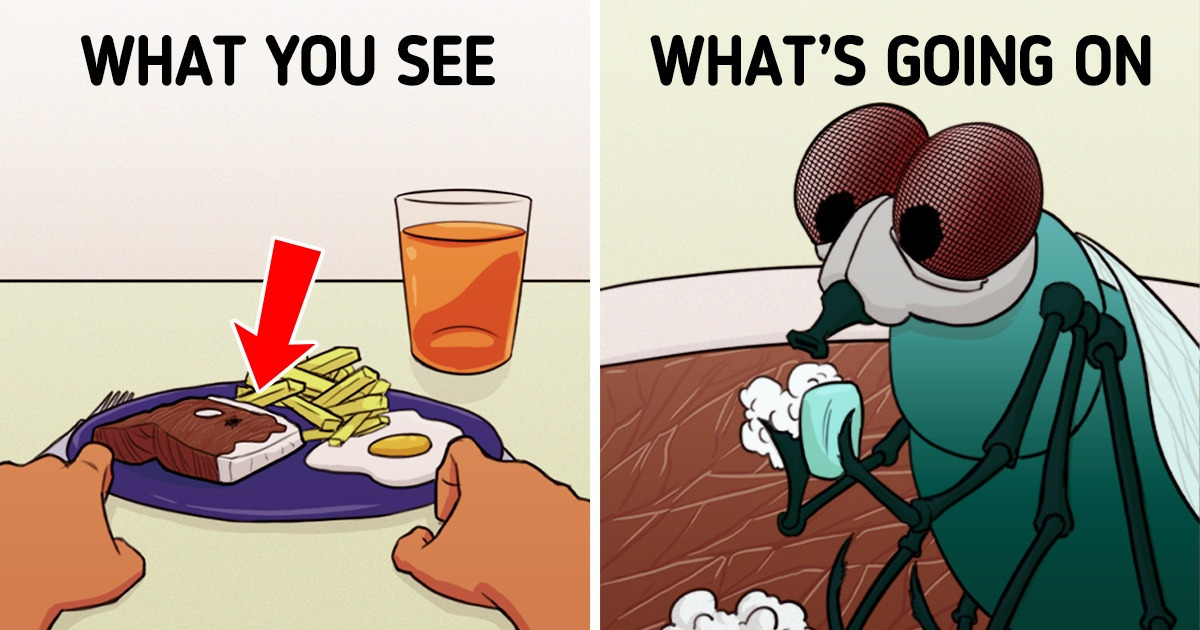
Flies aren’t the type of insect that gets along with humans. They don’t sting like mosquitoes or look as repelling as cockroaches, but the truth is, they always manage to make us nervous: Flies don’t get tired of lounging on our food or even on our bodies (how dare they?). But no matter how anxious they can make us, these insects have habits that fill us with more stress once we become aware of them.
Bright Side got curious about the issue, so we investigated 11 things about flies to satisfy our curiosity, and frankly, we now think they are way more complex insects than we thought they were.
1. If they rub their “hands,” it’s not because they’re putting together a Machiavellian plan.
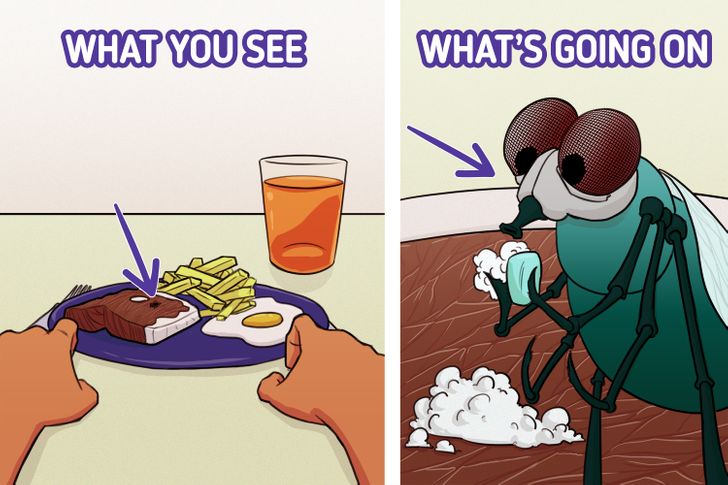
It’s not that flies are thinking, “You fool! As soon as you get distracted, I’ll put my paws on your food,” (while laughing wickedly and rubbing their hands). Although it’s almost impossible to see, flies spend a lot of time carefully grooming themselves; maybe more than we do. If you look at these insects, you may notice that they often rub their legs, body, head, and wings. They’re not doing it because something’s itchy but because they’re getting rid of dirt. You could say that they’re compulsive cleaners.
If they rub their “legs” (they don’t really have “hands”), they do it for biological reasons. By eliminating dirt from the legs, they discard anything that could alter their sensors, and their sensors are extremely important: They allow them to land on a surface and determine if the food they are on is edible. They also help them to fly and find food. Hygiene is a matter of life or death for flies.
2. They clean themselves more than we do because they get dirtier.
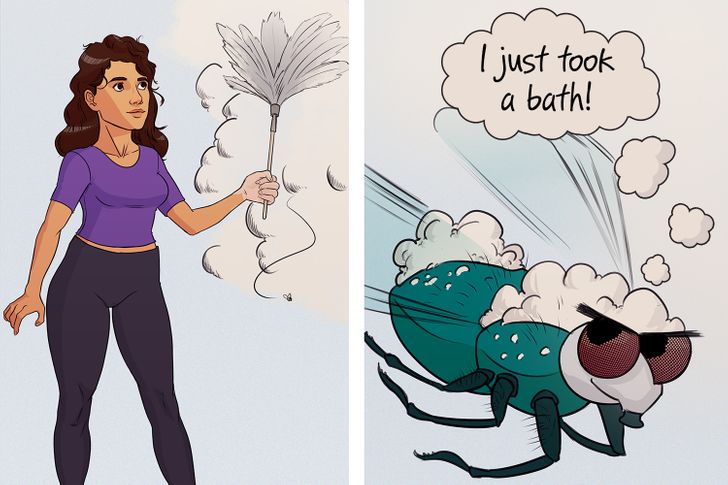
If you got some orange juice on your hands while eating an orange, you would probably wash your hands afterward. But in the tiny world of flies, the business of staying clean and keeping their sensors activated is quite a deed. Because of their small size, every little particle of dust and pollen can become a health catastrophe for them.
Flies have to clean themselves very carefully. They sanitize their bodies with their legs, wings, and even eyes (yes, the eyes, and they don’t have eyelids). They do it with the skill of a gymnast. They also use their mouths to clean debris from their paws and to discard dirt from scraps that seem edible.
3. They can feel flavors all over their bodies.
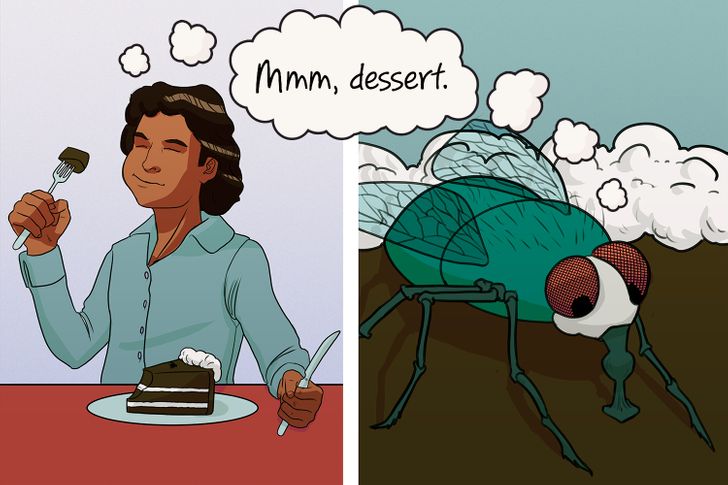
According to a study, flies have receptors that allow them to taste food like humans and detect if what they’re savoring is sweet or sour, good or bad. But there’s a big difference between us and them: Imagine you’re about to eat your favorite food, like pizza (we all love pizza). You may enjoy its aroma, but you will only know if it tastes good once you try it.
According to professionals, while you would taste the pizza by feeding yourself, flies could taste it with their wings and legs. This is possible because they have flavor receptors distributed throughout their bodies. Can you imagine enjoying your pizza with your hands? That’s exactly what they do. Eating should be a sensory experience!
4. Their sense of taste is not for savoring food.
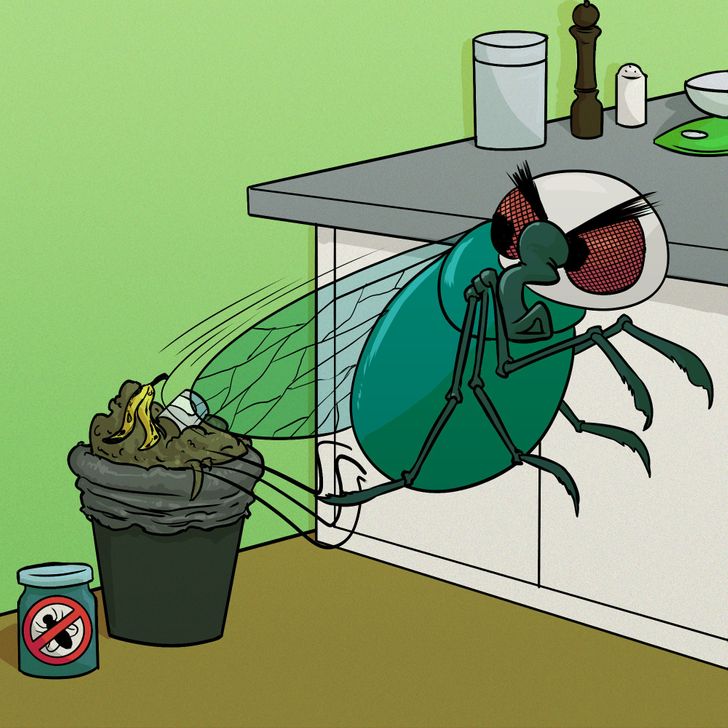
Let’s be honest, if flies had just a bit of good taste, they wouldn’t eat a lot of the things they land on, but they do. This is because their perception of taste is not to savor food but to detect it and determine whether they’re going to eat it or not. “Taste neurons basically tell the fly if the food is good or bad to eat,” explain professionals.
5. There are thousands of species of flies.
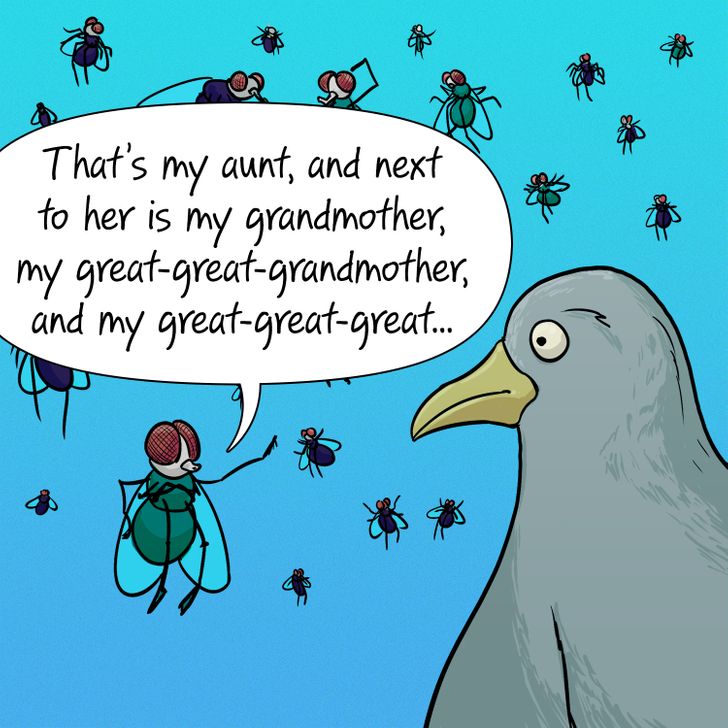
And by “thousands,” we don’t mean just 1,000 or 2,000. The world is so huge this would be a tiny digit. Studies have calculated around 150,000 species of flies. Without a doubt, that figure seems excessive if we take into account that, for example, there are only approximately 18,403 bird species. But we still believe that that amount is enough. Can you imagine all of them surrounding your food?
6. They’re not as fast as we think.

It’s quite a challenge to catch a fly. They dodge all of our attempts to get rid of them with such precise ability that we might confuse them with ninjas. But, in reality, they’re not as fast as we think.
They can only fly at 4.3 mph, which is equivalent to a human walk. Fun fact: If they did a race with dragonflies, they would lose since the latter can fly at 35 mph.
7. Their capacity to avoid danger comes from their eyes.

They may not fly as quickly as we think, but they certainly have precise vision. To explain why, we’ll clarify something first: When light penetrates human eyes, a chemical reaction sends that information to the brain through electrical impulses.
But flies have a mechanical reaction instead that allows for faster neural signals. Besides, the short distance from a fly’s eyes to its brain speeds up information processing. We might believe we’re about to catch them with a flytrap at a high speed, but they can visualize all of our movements as if we were moving in slow motion.
8. Flies can see in all directions.
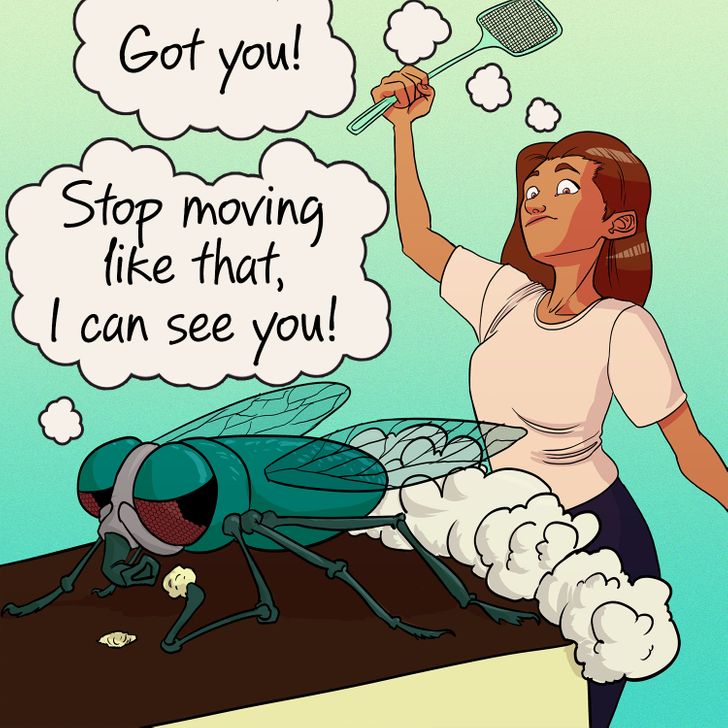
Apart from seeing the world in slow motion, flies’ eyes allow them to see at a 360° angle and see everything behind them. Rest assured that if you plan to smack them from behind, the result will be the same — it will escape in the same way as if you attacked face to face.
9. They can walk upside down.

We’re so used to seeing flies walking everywhere, that if we saw them walking upside down, we wouldn’t be surprised. But we definitely would need a lot of talent (and good insurance) to walk so naturally upside down.
It’s not that they’re in better physical condition — it’s because their feet have 2 types of adhesive pads. They’re called pulvilli and they allow the insects to adhere to surfaces. Then, to detach, they use their claws to remove their feet from where they’re stuck.
10. We have many things in common with flies, like our DNA.
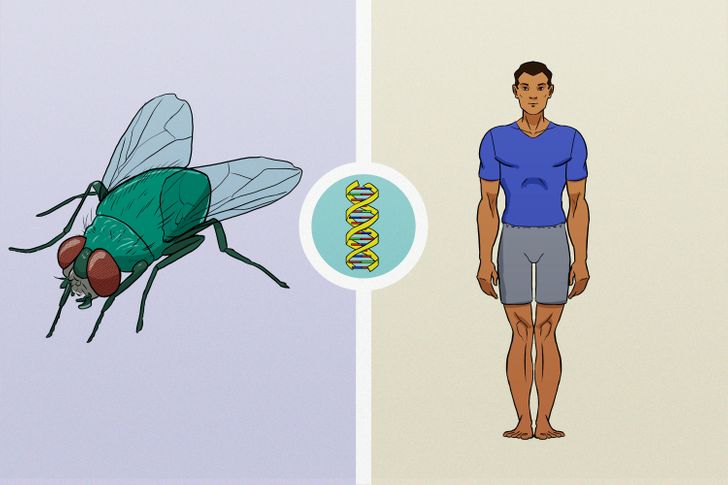
Human genetics are very similar to fruit flies,’ according to scientists. “About 61% of known human disease genes have a recognizable match in the genetic code of fruit flies,” they explain. This is why it’s a good idea to consider them as suitable replacements for humans in some experiments.
11. Killing all the flies in the world would be a terrible idea.

As unbearable as they are, flies are essential to the world. Professionals claim that, in addition to relaxing on people’s food, they pollinate plants, eat decaying organisms, and consume waste. No one but them would be willing to do that dirty work. Can you imagine all the filth that would accumulate if they were extinguished?
And if that does not seem like enough to support them as co-inhabitants, some insist chocolate wouldn’t exist if they didn’t. There is a particular species of fly that pollinates cacao plants. No doubt, many people would gladly appreciate their existence if they knew this.
Which insect do you find the most annoying? Do you have any personal tactics to keep these intruders out of your kitchen? We certainly want to know!
Comments
Related Reads
9 Unexpected Things That Show a Marriage Won’t Last Long

15 Strangers Who Took a Normal Day and Made It Unforgettable

20+ People Tried on Clothes From Previous Generations, and They Look Insanely Cute

16 Stories That Prove Kindness Is the Quietest Yet Strongest Language in the World

12 Moments That Prove Kindness Takes Seconds but Stays Forever

13 Quiet Acts of Kindness That Turned Ordinary People Into Superhumans

My Daughter Wanted Me to Pay for Her Wedding—I Gave Money to Someone Who Actually Deserved It

I Refused to Pay for My Stepson’s College—He’s Not My Responsibility

I Refused to Choose Which Grandchildren to Love

17 Moments That Prove Quiet Kindness Can Work Real Miracles

I Refuse to Be a Wallet for My Girlfriend’s Kids, and Her Family Is Calling Me Selfish

I Refused to Return to the Office After Years of Remote Work — Then HR Dropped a Bombshell
